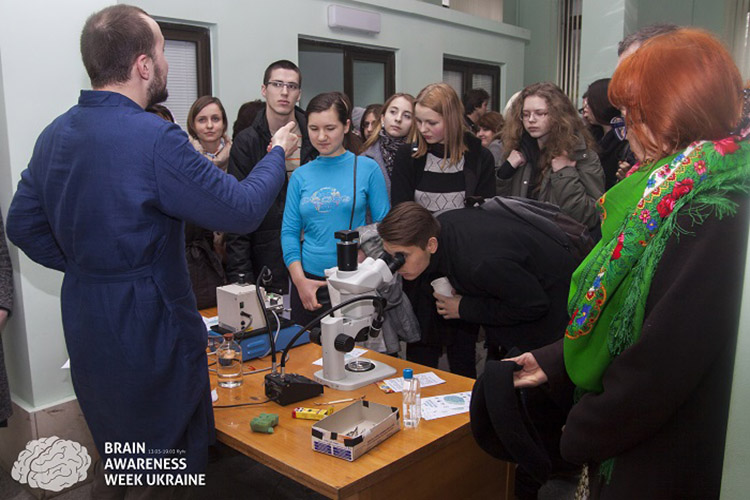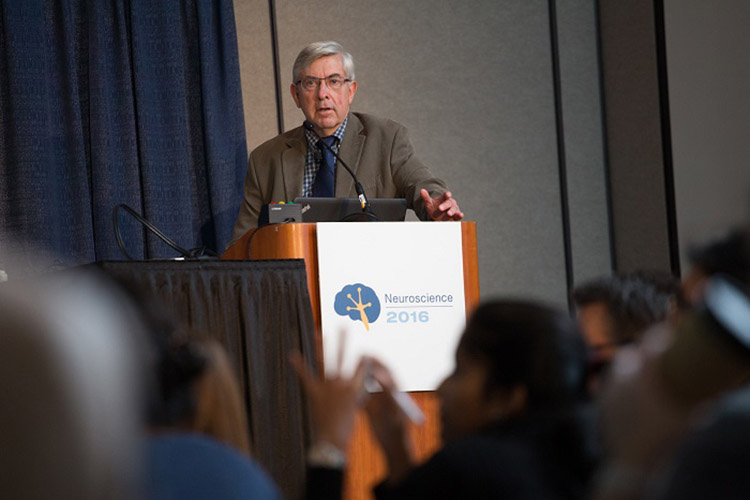
Inside Neuroscience: Exploring the Root of Autism
Autism spectrum disorder, estimated to affect about 1 in 68 children, can have profoundly different effects from child to child. While autism is typically characterized by troubles with social interactions, repetitive behaviors, and speech and nonverbal communication, children with the disorder experience a wide variation of symptoms, skills, and levels of disability. Neuroscientists are working to understand the entire “spectrum” of the disorder by unraveling the interplay of genetic and environmental factors that may contribute to autism.
During a press conference at Neuroscience 2016, researchers explained how they are looking to develop better therapies by exploring possible links to chemicals in the environment, the potential effects of hormones given to mothers during childbirth, as well as differences in brain regions important in the development of the disease.
“This is an exciting moment in autism research,” said Emanuel DiCicco-Bloom, an expert on neurodevelopmental disorders from Rutgers University and moderator for the press conference. “There’s opportunity for environmental impacts to play roles, whether it’s during gestation, when mothers may get infections or take medications, or during early postnatal development.”
Early Pesticide Exposure Disrupts Rats' Communications, Social Behavior
Pesticide exposure is one of the environmental factors linked to the development of autism. Epidemiological studies have revealed a connection between organophosphate pesticides, the most commonly used pesticides in the U.S., and neurodevelopmental disorders, including autism. Animal studies clearly reveal toxic effects at very high doses; however, scientists haven’t tested the consequences of early-life exposure to very low doses that may better represent what humans may experience.
To test this, Jill Silverman at the University of California, Davis, treated newborn rats with either low doses of chlorpyrifos — a widely used organophosphate — or a control substance. When separated from their mothers, pups exposed to chlorpyrifos made fewer ultrasonic vocalizations — high-pitched distress calls — than control-treated pups, suggesting an autism-like deficit in communication. When they became juveniles, the chlorpyrifos-treated rats displayed fewer playful behaviors with other rats compared with control rats, reminiscent of social behavior impairments seen in autism.
“We found that the early-life exposure to chlorpyrifos affected not just one developmental behavior relevant to autism but two,” Silverman said, noting communication and social behavior are two of the most prominent relevant behaviors. “Given these functional outcomes, more research into pesticide exposure in early life is definitely warranted.”
Oxytocin Given to Mothers During Childbirth May Promote Socialibility in Offspring
Early-life exposure to the hormone oxytocin might also affect the developing brain. Oxytocin promotes maternal bonding and social behavior, but it is also commonly given to women to induce labor and promote contractions. It’s unknown how oxytocin given to the mother during labor may affect the fetal brain.
To test this, William Kenkel of Indiana University Bloomington administered either oxytocin or a saline control to pregnant prairie voles on their expected delivery date. When separated from their mothers, pups born to mothers given oxytocin vocalized more compared with control pups. As adults, those prairie voles born to oxytocin-treated mothers also cared more for unfamiliar pups and spent more time socializing with unfamiliar adults than those born to saline-treated mothers.
“The fetal brain is sensitive to oxytocin at birth, even when it’s administered indirectly to the mother,” Kenkel said. “And this oxytocin administration can have lifelong consequences in terms of social behavior that last into adulthood.”
Increasing Oxytocin Release May Improve Social Impairments in Autism
Having too little oxytocin, on the other hand, has been linked to autism spectrum disorder and deficits in social behaviors. But treating those with the disorder by increasing oxytocin in the brain has failed because oxytocin doesn’t easily cross the blood brain barrier. Elena Minakova at the University of California, Los Angeles, wondered whether Melanotan-II (MT-II), a drug that triggers neurons to release oxytocin, would help reduce social impairments seen in mouse models of autism.
Minakova used an inflammatory mouse model of autism. Pregnant mice were treated with interleukin-6 to induce an inflammatory state in the fetal brains, which produces autism-like behaviors in the offspring. When the offspring became adults and were given an option between hanging out with a toy or another mouse, they spent equal time with both, a choice considered to indicate a deficit in sociability.
When the autism model mice were administered MT-II continuously for seven days, however, the MT-II-treated mice chose to spend more time interacting with another mouse over a toy and made more calls to other mice, displaying behaviors similar to wild-type mice. Autism model mice treated with saline, however, did not display improvements to sociability.
“What’s interesting is that Melanotan-II treatment given to adult mice actually helped reverse the social deficits through endogenous oxytocin release,” Minakova said.
Replacing Inhibitory Cells Reverses Social and Cognitive Deficits in Rats
People with autism spectrum disorder have also been shown to have a reduction in parvalbumin neurons, which release the inhibitory transmitter GABA, in their prefrontal cortices (PFC). This GABA deficit results in too much excitation of the PFC. Daniel Lodge at the University of Texas hypothesized that autism symptoms might be reduced if the missing parvalbumin neurons are replaced and activity in the prefrontal cortex is restored to normal levels.
To test his theory, Lodge first manipulated mouse embryonic stem cells to become parvalbumin-expressing neurons. He transplanted these into the prefrontal cortices of both autism model rats and wild-type rats. One month later, he tested how these rats interacted with other rats. Autism model rats that received cell transplants displayed normal social behavior, preferring to spend more time with other rats than autism model rats that did not receive the transplant. He also tested their cognition; autism model rats have a hard time learning a new rule, such as when a hidden treat is suddenly moved to a different place. But the autism model rats that received the transplant cells learned the rule as quickly as wild-type mice.
“We think that a decrease in these parvalbumin neurons may contribute to pathology in autism,” Lodge said. “This [work] suggests that cell transplants can reverse deficits in both social behavior and cognitive function in a rat model of autism.”
Young Autistic Brains Have Excess Dendritic Spines in the Amygdala
Another brain region that is abnormal in autism is the amygdala, which has a role in social and emotional regulation; children with autism spectrum disorder have larger amygdala compared with typical children. Cynthia Schumann of the MIND Institute at the University of California, Davis, thought the difference might be due to an overabundance of dendritic spines — neuronal protrusions that form contact points with other neurons — in young autistic brains. In typical development, dendritic spines are overproduced and then unused spines are eventually removed in a process called synaptic pruning. If the pruning process malfunctions somewhere in the brain, that brain region may be a different size.
To test her theory, Schumann stained the amygdala and counted spines in post-mortem brain tissue from 14 autism spectrum disorder cases and 13 typically developing cases. The brains of those 18 and younger with autism had an increased number of spines compared with typically developing brains, suggesting dendritic spines are either overproduced or not removed as efficiently in autism. But the adult brains, including those with autism, had similar numbers of spines, indicating that the autism brain might right itself later on by increasing spine removal.
“We’re seeing that in children with autism there is an increase in the number of spines on dendrites in the amygdala, and in adulthood that difference disappears,” Schumann said. “This inefficient fine-tuning process and communication in the amygdala could contribute to the social and emotional impairments that we see in people with autism.”
Many of the researchers wrapped up their talks with the hope that their work can lead to effective treatments for autism. By identifying the causes — whether it be exposure to pesticides or not enough oxytocin — a solution is closer at hand.























